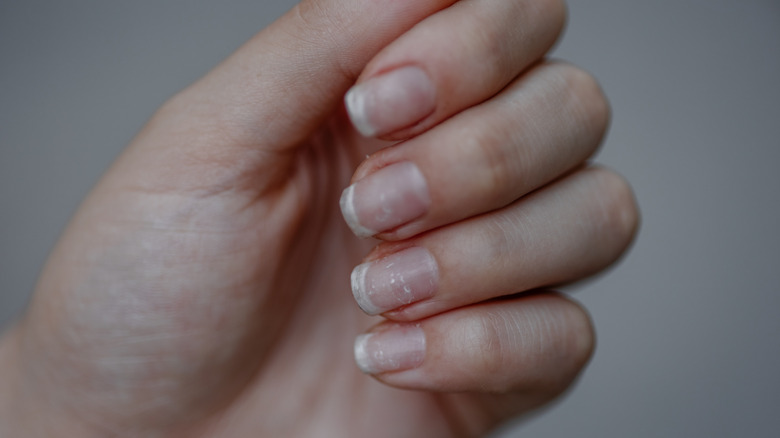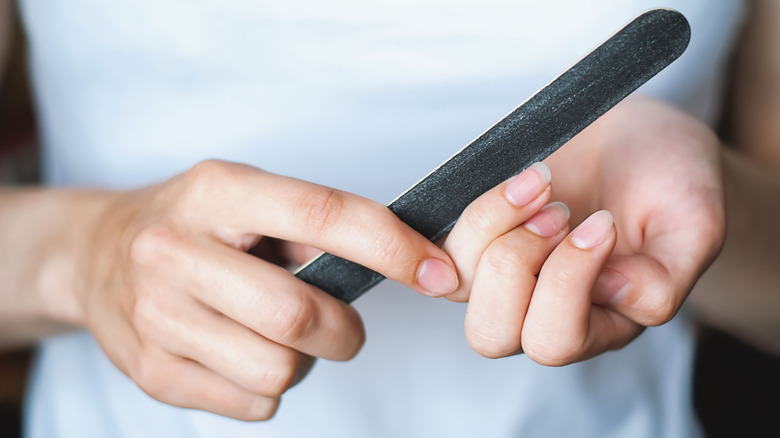This Is What Really Causes Brittle Nails
It's hard to find someone who hasn't heard of a broken nail being turned into a joke. When someone complains about a broken nail, it hints that the person isn't used to working with their hands.
That being said, a broken fingernail can mean a lot of things. Rather than being a sign that someone doesn't work with their hands, it could be a sign that they work with their hands too much. Mechanics aren't known for having long, luxurious nails buffed to a soft finish, and it's all too easy to crack a knuckle — let alone a nail — when you're working with an engine.
As WebMD says, brittle and easily broken nails can be a sign that someone's hands are regularly moving between wet and dry. One example is someone who works in the medical or hospitality field. Moisture makes our nails swell, and when they dry, they shrink again. Going through this process over and over can leave nails brittle and prone to breaks. Wearing gloves can help stop the cycle, but only if that is the cause of a person's brittle nails. In some cases, the cause runs much deeper.
The impact of aging and deficiencies on nails
When harsh chemicals and frequent wet-dry cycles are ruled out, brittle nails can be blamed on nutrients and blood not reaching the fingertips. WebMD explains that both poor nutrition and certain medical issues, like Raynaud's Syndrome, can limit the nutrients and blood flow that reaches a person's nails. Anemia, another possible cause, can limit the amount of oxygen in a person's bloodstream, which also leads to brittle nails (via Penn Medicine).
These are serious conditions, and if someone is experiencing additional symptoms, they should speak to a healthcare provider. However, there is one more common reason for brittle nails, one that affects most people, regardless of their health. Aging, as it turns out, is hands-down the most common reason that a person's nails become brittle. MedlinePlus states that as we age, our nails may become brittle, and the ends may become prone to breaking. Other changes include thickening toenails and an increased risk of ingrown nails.


